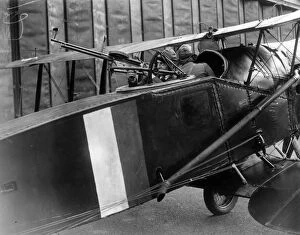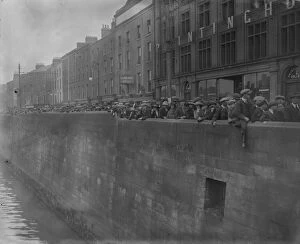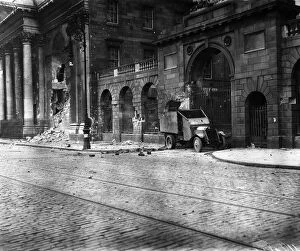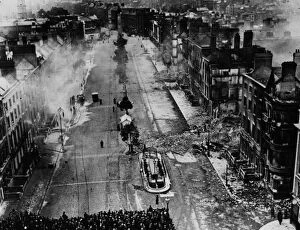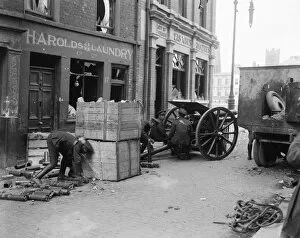Irish Civil War Collection
"The Irish Civil War, 1922: A Nation Divided in Conflict" In the midst of political turmoil and fierce ideological clashes
All Professionally Made to Order for Quick Shipping
"The Irish Civil War, 1922: A Nation Divided in Conflict" In the midst of political turmoil and fierce ideological clashes, Ireland found itself engulfed in a devastating civil war. The Great Battle of Dublin became a defining moment as opposing forces clashed for control over the capital city. One iconic image captured the intensity of this conflict - the capture of the Four Courts in Dublin. This black and white photograph stands as a stark reminder of the violence that tore through Ireland during this tumultuous period. As tensions escalated, hands shook across Ireland, symbolizing both fear and determination to fight for their respective causes. A vivid colour lithograph depicted this powerful imagery, showcasing how deeply divided society had become. The Four Courts, once an emblematic symbol of justice, was reduced to ruins after being shelled by British Artillery following its takeover by IRA forces. The sight of these flames devouring such an important institution left a lasting impact on all who witnessed it. Beyond Dublin's borders lay Belfast Slum - another battleground where bitter confrontations unfolded between factions with differing loyalties. It served as a grim reminder that no corner of Ireland was spared from the ravages of war. The siege at Four Courts intensified as both sides fought relentlessly for control over this strategic stronghold. Images depicting brave soldiers attacking or defending these walls showcased their unwavering commitment to their cause amidst unimaginable chaos. Amidst this chaos, an air force gunner took aim from above - his presence highlighting how modern warfare technology played a role in shaping this conflict's outcome. Dublin 1922 saw not only land battles but also sea landings; troops arriving via waterways added yet another dimension to an already complex battlefield. These amphibious assaults further demonstrated each side's resolve to secure victory at any cost. Ultimately, history remembers those fateful moments when shells rained down upon the Four Courts - leaving nothing but destruction in their wake.









